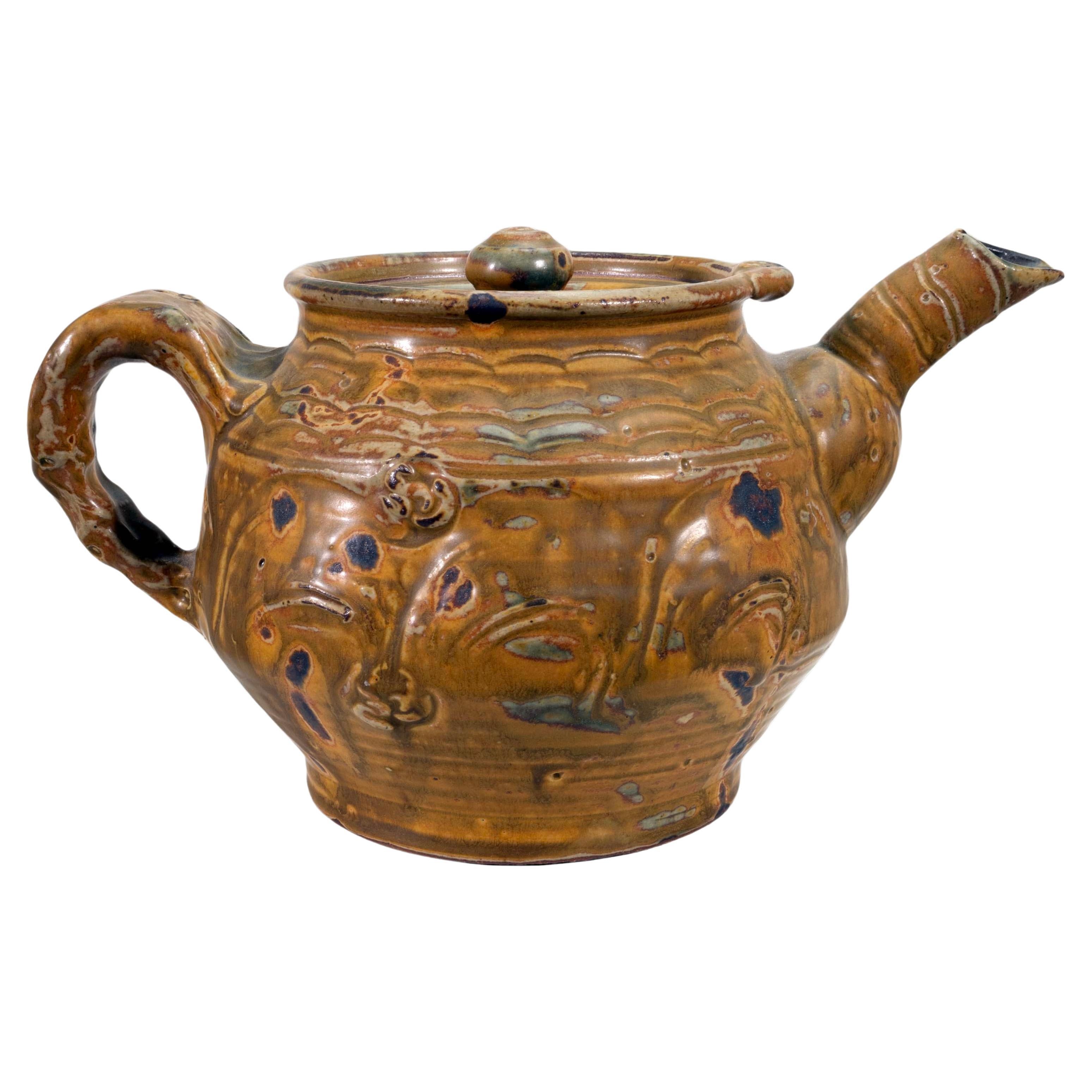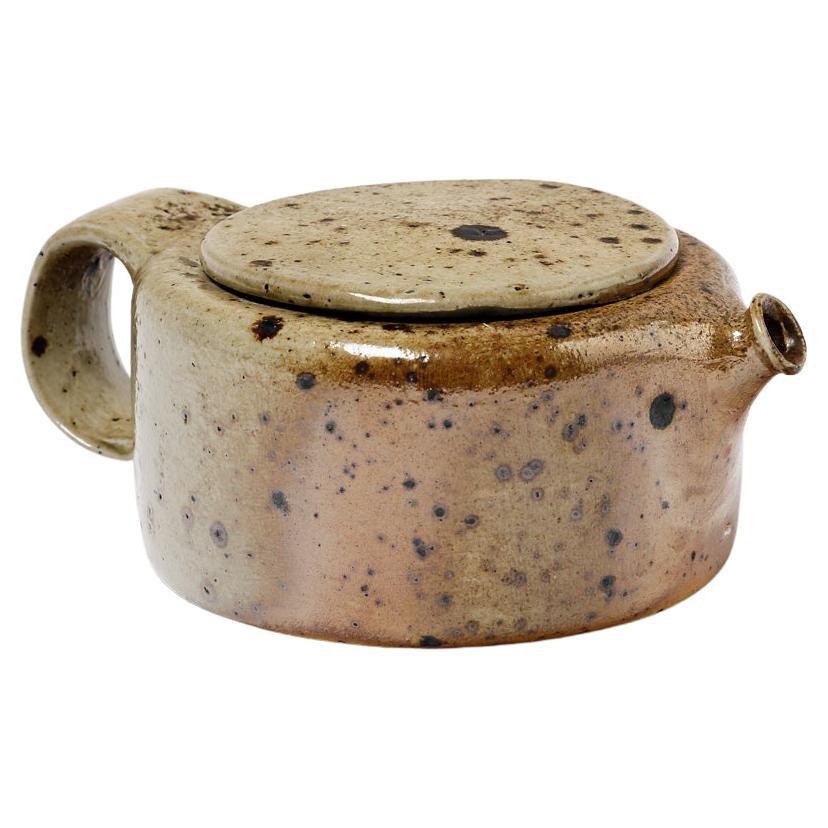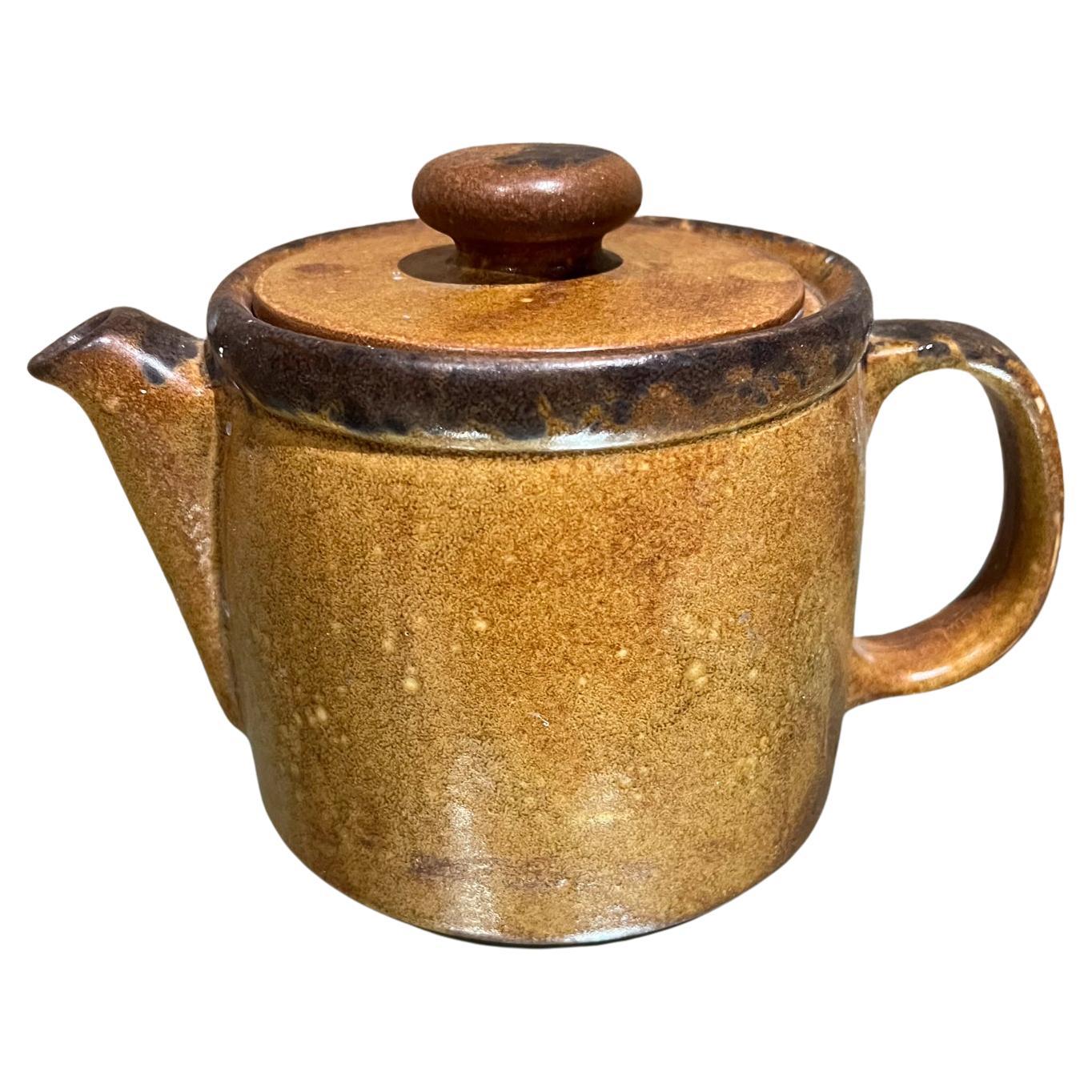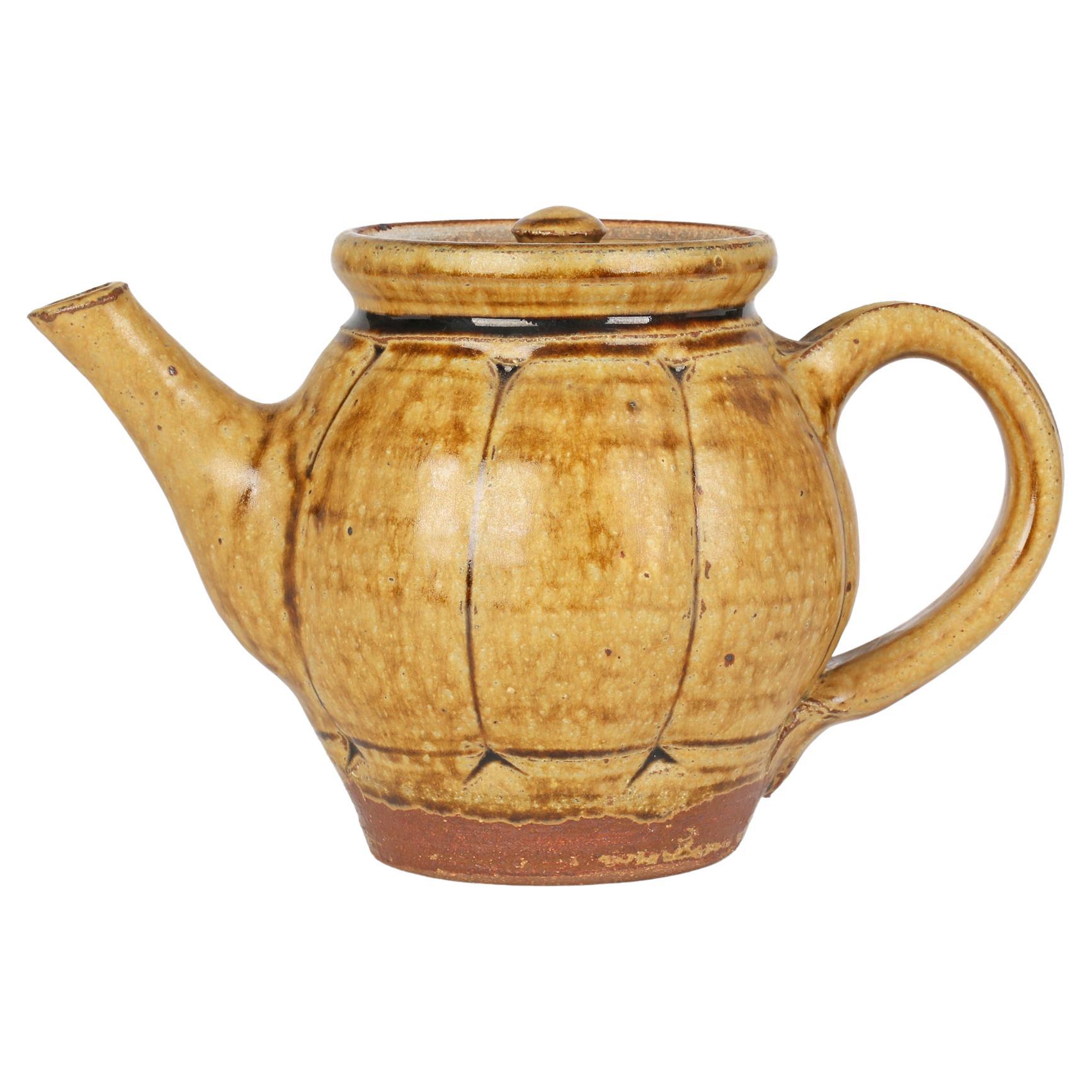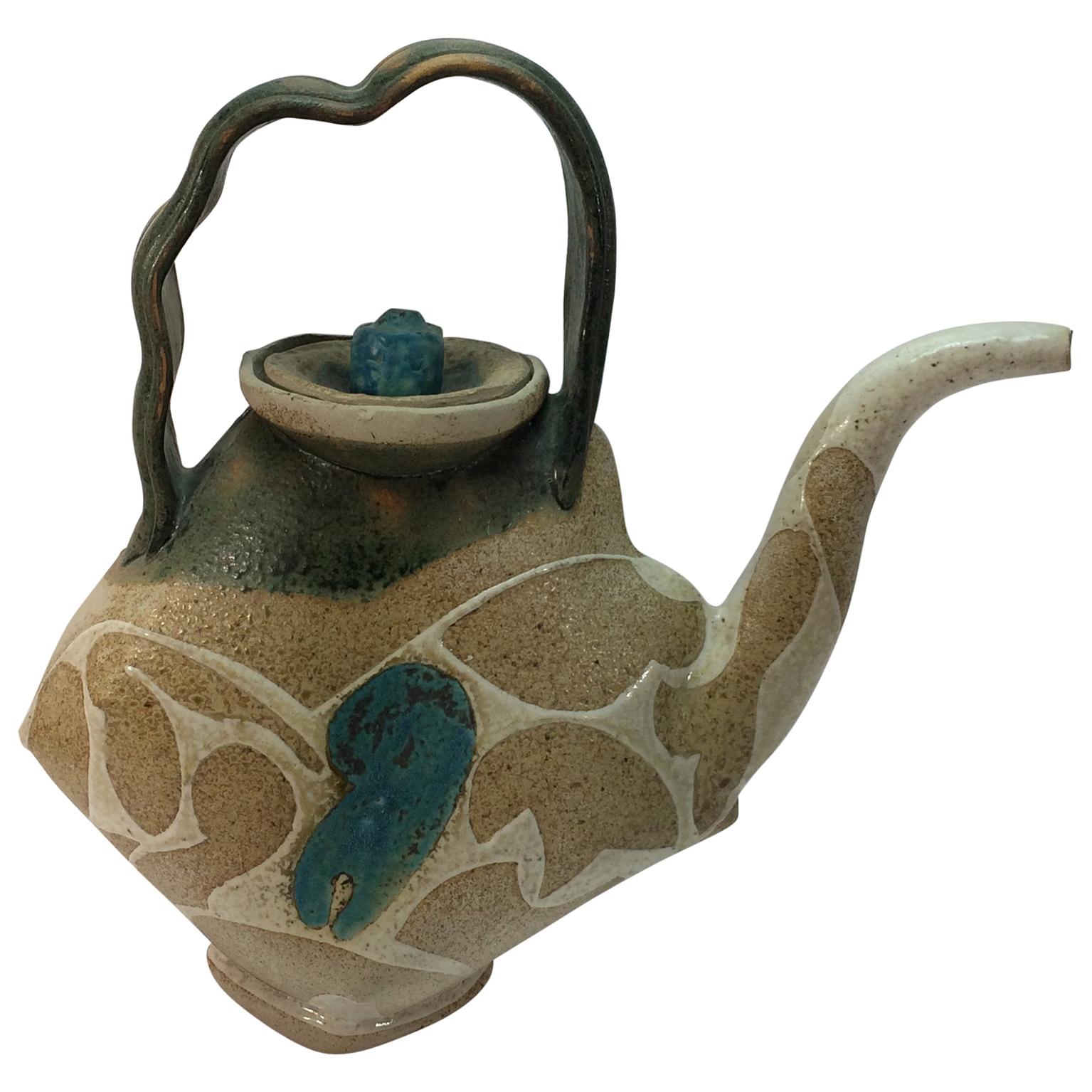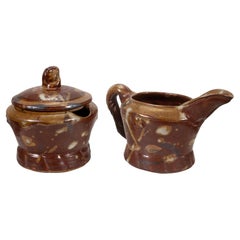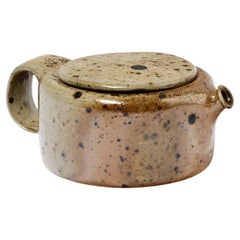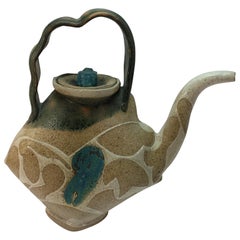Items Similar to John Glick Modernist Stoneware Glazed Ceramic Pottery Tea Pot Plum Tree Pottery
Want more images or videos?
Request additional images or videos from the seller
1 of 10
John Glick Modernist Stoneware Glazed Ceramic Pottery Tea Pot Plum Tree Pottery
$850
£642.01
€741.98
CA$1,192.26
A$1,326.09
CHF 694.05
MX$16,173.97
NOK 8,720.98
SEK 8,203.21
DKK 5,538.14
About the Item
A modernist stoneware glazed ceramic tea pot by Detroit artist John Glick of Plum Tree Pottery. Circa late 20th century. Glazed in earthtones. Artisisnal yet functional and makes a unique modern statement. From a private collection. Dimensions: 9.5"h x 8"L x 6"w. In very good vintage condition. John Glick (1938-2017) was an American ceramicist born in Detroit, MI. He studied at Wayne State University and Cranbrook Academy of Art. Through an open to artistic experimentation, Glick was most influenced by the styles and aesthetics of Asian pottery an inspiration that shows in his use of decorative patterns and glaze choices. His experience working with ceramics led him to publish several articles about the craft. In addition to producing pottery, Glick began making "landscape oriented" wall panels during the latter part of his career. Known as "the people's potter," he is primarily remembered for his contributions to art and the field of ceramics. Glick operated his studio, Plum Tree Pottery, in Farmington Hills, Michigan, from 1964 to 2016.
- Creator:John Glick (Artist)
- Dimensions:Height: 9.5 in (24.13 cm)Width: 8 in (20.32 cm)Depth: 6 in (15.24 cm)
- Materials and Techniques:
- Place of Origin:
- Period:
- Date of Manufacture:Mid 20th century
- Condition:
- Seller Location:Keego Harbor, MI
- Reference Number:1stDibs: LU2715341477922
About the Seller
4.9
Gold Seller
Premium sellers maintaining a 4.3+ rating and 24-hour response times
Established in 2014
1stDibs seller since 2017
1,002 sales on 1stDibs
Typical response time: 3 hours
- ShippingRetrieving quote...Shipping from: Keego Harbor, MI
- Return Policy
Authenticity Guarantee
In the unlikely event there’s an issue with an item’s authenticity, contact us within 1 year for a full refund. DetailsMoney-Back Guarantee
If your item is not as described, is damaged in transit, or does not arrive, contact us within 7 days for a full refund. Details24-Hour Cancellation
You have a 24-hour grace period in which to reconsider your purchase, with no questions asked.Vetted Professional Sellers
Our world-class sellers must adhere to strict standards for service and quality, maintaining the integrity of our listings.Price-Match Guarantee
If you find that a seller listed the same item for a lower price elsewhere, we’ll match it.Trusted Global Delivery
Our best-in-class carrier network provides specialized shipping options worldwide, including custom delivery.More From This Seller
View AllJohn Glick Ceramic Stoneware Coffee Tea Pot Signed and Stamped
By John Glick
Located in Keego Harbor, MI
A modernist stoneware glazed ceramic tea pot by Detroit artist John Glick of Plum Tree Pottery. Circa late 20th century. Glazed in earthtones. Artisisnal yet functional and makes a u...
Category
Late 20th Century American Pottery
Materials
Pottery
John Glick Modernist Stoneware Glazed Ceramic Planter Vessel Plum Tree Pottery
By John Glick
Located in Keego Harbor, MI
A modernist stoneware glazed ceramic planter by Detroit artist John Glick of Plum Tree Pottery. Circa late 20th century. Glazed in earthtones. Artisisnal yet functional and makes a u...
Category
Mid-20th Century American Vases
Materials
Ceramic
John Glick Ceramic Stoneware Sugar and Creamer Holder Stamped Plum Tree Pottery
By John Glick
Located in Keego Harbor, MI
A modernist stoneware glazed ceramic sugar and creamer holders by Detroit artist John Glick of Plum Tree Pottery. Circa late 20th century. Glazed in earthtones. Artisisnal yet functi...
Category
Late 20th Century American Pottery
Materials
Pottery
John Glick Modernist Stoneware Glazed Ceramic Footed Planter Plum Tree Pottery
By John Glick
Located in Keego Harbor, MI
A modernist stoneware glazed ceramic planter by Detroit artist John Glick of Plum Tree Pottery. Circa late 20th century. Glazed in earthtones. Artisisnal yet functional and makes a u...
Category
Late 20th Century American Planters, Cachepots and Jardinières
Materials
Ceramic
John Glick Ceramic Stoneware Blue Covered Vessel Signed and Stamped
By John Glick
Located in Keego Harbor, MI
A modernist stoneware glazed ceramic covered vessel by Detroit artist John Glick of Plum Tree Pottery. Circa late 20th century. Glazed in earthtones. Artisisnal yet functional and ma...
Category
Late 20th Century American Pottery
Materials
Pottery
John Glick Ceramic Stoneware Bowl with Spout Signed
By John Glick
Located in Keego Harbor, MI
A modernist stoneware glazed ceramic bowl by Detroit artist John Glick of Plum Tree Pottery. Circa late 20th century. Glazed in earthtones. Artisisnal yet functional and makes a uniq...
Category
Late 20th Century American Pottery
Materials
Pottery
You May Also Like
20th Century Design Stoneware Ceramic Tea Pot by Montreau Lohoof 1970 La Borne
By La Borne Potters
Located in Neuilly-en- sancerre, FR
Montreau Lohoof
Realised in La Borne circa 1970
Original large stoneware ceramic tea pot
Signed under the base : ML
Original good conditions
Measures: height 11 cm
L...
Category
20th Century French Mid-Century Modern Ceramics
Materials
Ceramic
1970s McCoy Art Pottery Canyon Mesa Glazed Tea Pot
By David Cressey
Located in Chula Vista, CA
1970s McCoy Art Pottery Canyon Mesa Drip Glazed Tea Pot
Vintage personal Tea Pot Art Pottery signed McCoy
Speckled Earth tones.
5.5 h x 9 d x 5
Pre...
Category
Vintage 1970s American Mid-Century Modern Pottery
Materials
Pottery
Mike Dodd Studio Pottery Brown Ash Glazed Teapot and Cover
By Mike Dodd
Located in Bishop's Stortford, Hertfordshire
A stylish English studio pottery teapot and cover decorated in brown ash glazes by renowned potter Mike Dodd (English, b. 1943) and dating from t...
Category
20th Century English Modern Pottery
Materials
Clay
John Gill Vintage Studio Art Pottery Teapot Abstract Ceramic Signed Dated 84
Located in West Palm Beach, FL
John Gill studio art pottery ewer abstract hand thrown raised glazed decoration. Signed and dated 1984 on the bottom. Gill was born in 1949. His work is part of many museums permanen...
Category
Vintage 1980s American Organic Modern Ceramics
Materials
Stoneware
Midcentury Studio Pottery Teapot, Indistinctly Signed, Canada, circa 1970s
Located in Chatham, ON
Midcentury stoneware studio pottery teapot - hand carved/scraped decoration to the exterior - gloss cream glaze - dramatic integrated handle - separate lid - indistinctly signed on t...
Category
Mid-20th Century Canadian Mid-Century Modern Pottery
Materials
Ceramic
$346 Sale Price
30% Off
Handmade Ceramic Teapot in Brown Enamel France 1970s
By Jean Lerat, Robert Deblander, Claude Champy, La Borne Potters
Located in ROUEN, Normandie
Handmade Ceramic Teapot in Brown Enamel France 1970s
This vintage ceramic teapot was handmade by french artist Bernard Defer or Maxime Defer (h...
Category
Mid-20th Century French Mid-Century Modern Tea Sets
Materials
Sandstone
More Ways To Browse
Hall Tree Mid Century
Midcentury Modern Hall Tree
Modernist Pottery
Vintage Cranbrook
Studio Pottery Pot
Studio Pottery Wall Art
Vintage Glazed Pots
Ceramic Tea Pots
Cranbrook Ceramics
Vintage Tea Basket
Plum Tree Pottery
John Glick Pottery
Vide Pouch
Calling Card Tray
Ethiopian Tray
Guy Vidal
Hermes Celadon
Hermes Matchbox
